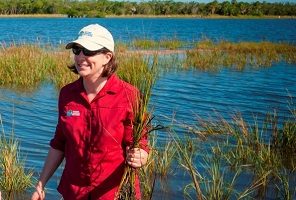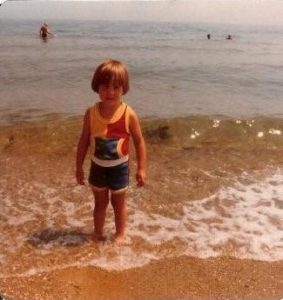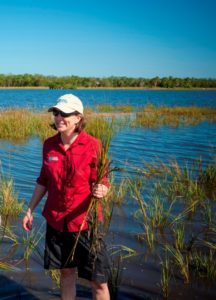
Remembering Why I do What I do: Reflections During #Habitat Month
We all have days where we question our profession; where we wonder if what we are doing really makes a difference, or if we are just spinning our wheels. Whenever I get too bogged down in budget spreadsheets and reporting, I head down to the shoreline, look around, take a deep breath and am reminded, especially during #Habitat Month, why habitat restoration is so important and why I do what I do.

My passion for the marine environment started as soon as I could walk, and only grew from there. This was fostered through family vacations to the beach, elementary school field trips to the coast, high school SCUBA dives in Monterey Bay, and college classes that involved sailing and studying everything from nudibranchs (aka sea slugs) to whales. However, the more I learned about the marine ecosystem, the more concerned I became for the long-term stability of this precious resource.
While conducting research on the Great Barrier Reef during one of the hottest summers on record, I witnessed a massive coral bleaching event. As an intern for Tampa Bay Watch, I saw firsthand the struggle manatees had as boat strikes became inevitable for the gentle giants. And out here in the Puget Sound I see killer whales fighting for survival as their prey become scarce, and pollution, chemicals, and boat traffic continue to increase. This is why I do what I do.
In 2005 I joined Restore America’s Estuaries (RAE) to do just that: restore the estuaries. Now more than 15 years later I look back at some of the results. Thousands of acres have been restored, countless dams have been removed to restore native fish habitat, seagrasses in Florida have been restored to historic levels, shorelines have been stabilized, shellfish and salt marsh have been grown and planted, invasive (non-native) species have been removed, and salmon habitat has been created, which can increase prey availability and help killer whales have a fighting chance. This is why I do what I do.

Living in a coastal community I am often approached by individuals who are concerned by issues they see in their back yards and want to do something, but don’t know where to begin. So we created the Coastal Restoration Toolkit to provide tools and information to empower those community members and help them #RestoreYourCoast….This is why I do what I do!
I live on an island, literally surrounded by the resource I am working to protect. I am fortunate that when I need a reminder, I can head down to the beach, listen to the waves and recharge my batteries. When I am getting cross-eyed over spreadsheets, or anxious about grant funding, or when I feel that we are fighting a never-ending battle, I can take to the water and let the wind fill my sails. And as the sun sets over the crystal clear waters, I remember that although it appears pristine from the surface, there is much more work to be done….I need to keep doing what I am doing.
Elsa Schwartz is senior director of restoration and administration at Restore America’s Estuaries.
